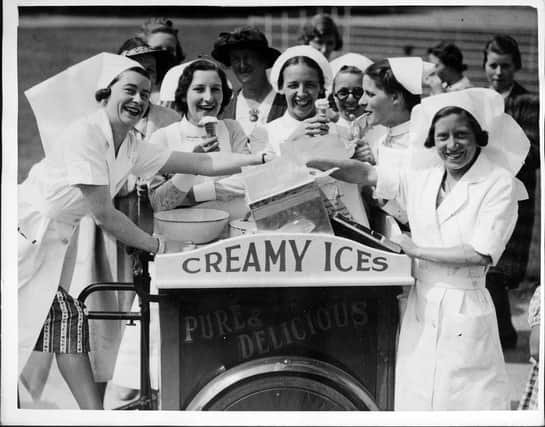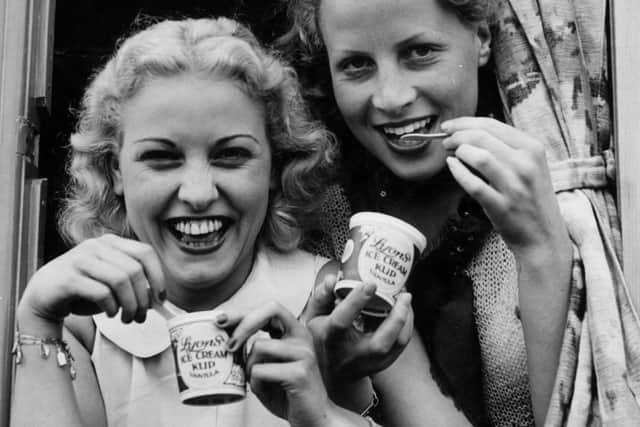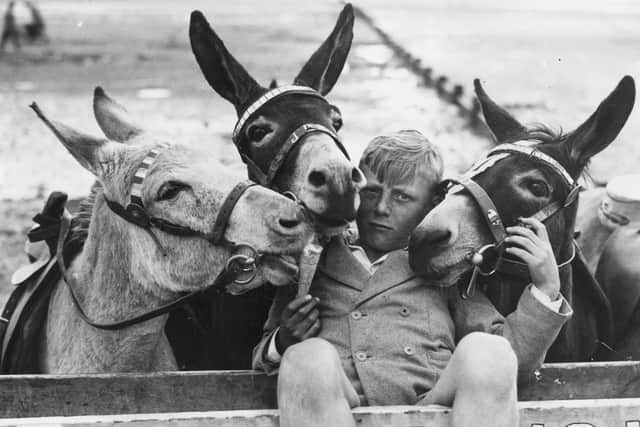Days when ice cream treats came on trikes


It was the invention of the ice cream machine that made it possible to turn out brickettes for tuppence and tubs for fourpence, and long before the age of the motorised truck, vendors were playing their trade wherever there were tourists.
The first machines consisted of little more than wooden buckets filled with ice and salt, and a rotating handle to mix them. Not long afterwards, electric and gas refrigeration made it possible to store the ice cream for more than a few hours, without using vast amounts of ice.
Advertisement
Hide AdAdvertisement
Hide AdA Swiss entrepreneur named Carlo Gatti is credited with making the product universally available in Britain. Having settled in the Italian quarter of Holborn, London, he opened a waffle and chestnut cafe and then an ice cream stall in Hungerford Market, dispensing “penny licks” – first in unhygienically reusable glasses and later in sugar cones that were ideal for eating on the go.


The first mobile vendors, like the one in the picture (right) used tricycles to literally peddle their wares, and in the interwar years, Wall’s could boast a fleet of 50, which were stored in a single garage. In the three years between 1924-7, sales went from around £13,000 to close to half a million, and the company later doubled the capacity of its dairy in Acton by constructing a purpose-built ice cream factory in Gloucester.
It was one of their employees, Cecil Rodd, who was credited with having devised the slogan, Stop Me and Buy One.
Editor’s note: first and foremost - and rarely have I written down these words with more sincerity - I hope this finds you well.
Advertisement
Hide AdAdvertisement
Hide AdAlmost certainly you are here because you value the quality and the integrity of the journalism produced by The Yorkshire Post’s journalists - almost all of which live alongside you in Yorkshire, spending the wages they earn with Yorkshire businesses - who last year took this title to the industry watchdog’s Most Trusted Newspaper in Britain accolade.


And that is why I must make an urgent request of you: as advertising revenue declines, your support becomes evermore crucial to the maintenance of the journalistic standards expected of The Yorkshire Post. If you can, safely, please buy a paper or take up a subscription. We want to continue to make you proud of Yorkshire’s National Newspaper but we are going to need your help.
Postal subscription copies can be ordered by calling 0330 4030066 or by emailing [email protected]. Vouchers, to be exchanged at retail sales outlets - our newsagents need you, too - can be subscribed to by contacting subscriptions on 0330 1235950 or by visiting www.localsubsplus.co.uk where you should select The Yorkshire Post from the list of titles available.
If you want to help right now, download our tablet app from the App / Play Stores. Every contribution you make helps to provide this county with the best regional journalism in the country.
Sincerely. Thank you.
James Mitchinson, Editor
Comment Guidelines
National World encourages reader discussion on our stories. User feedback, insights and back-and-forth exchanges add a rich layer of context to reporting. Please review our Community Guidelines before commenting.